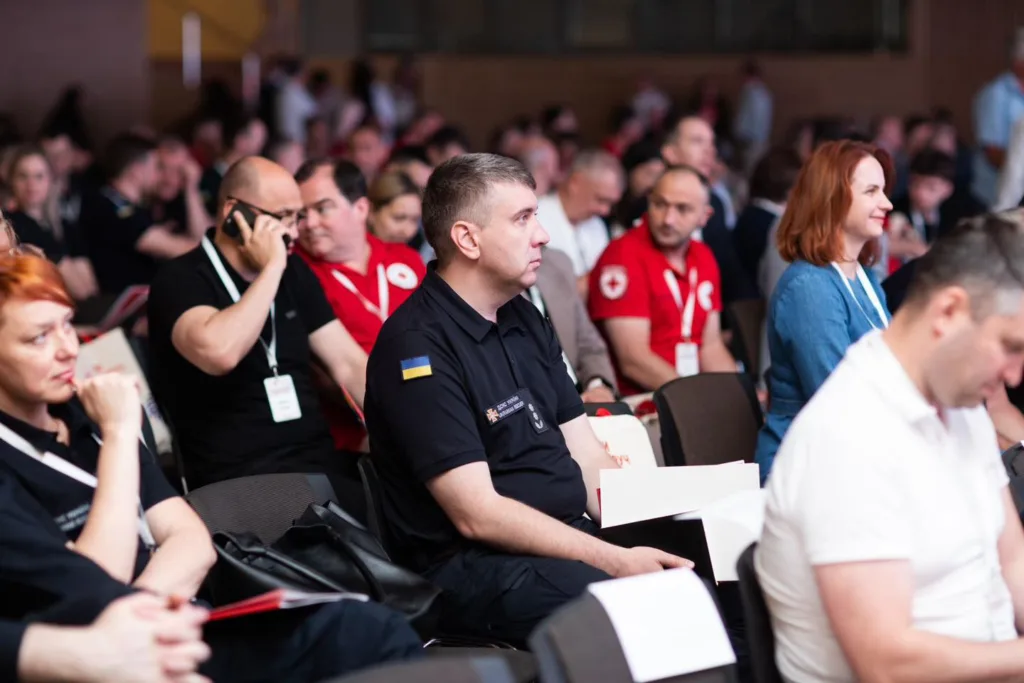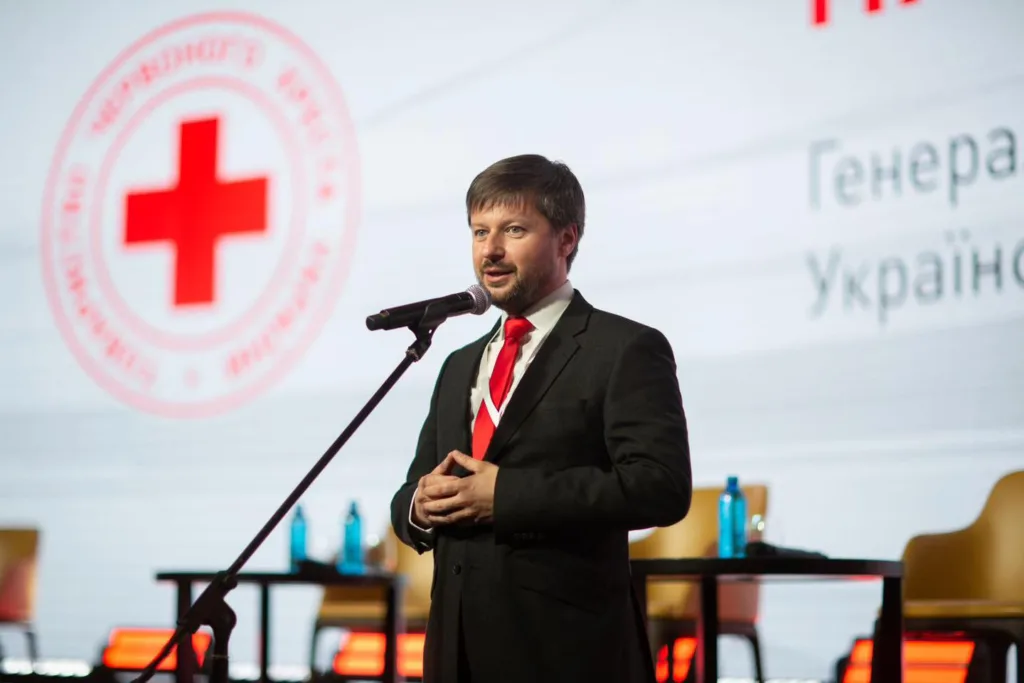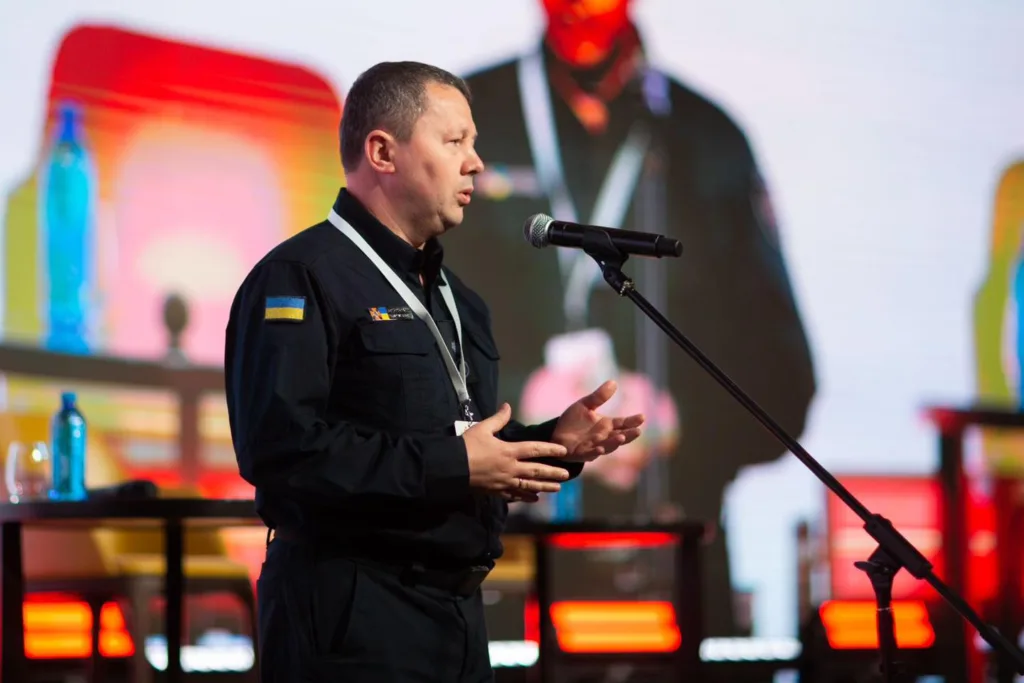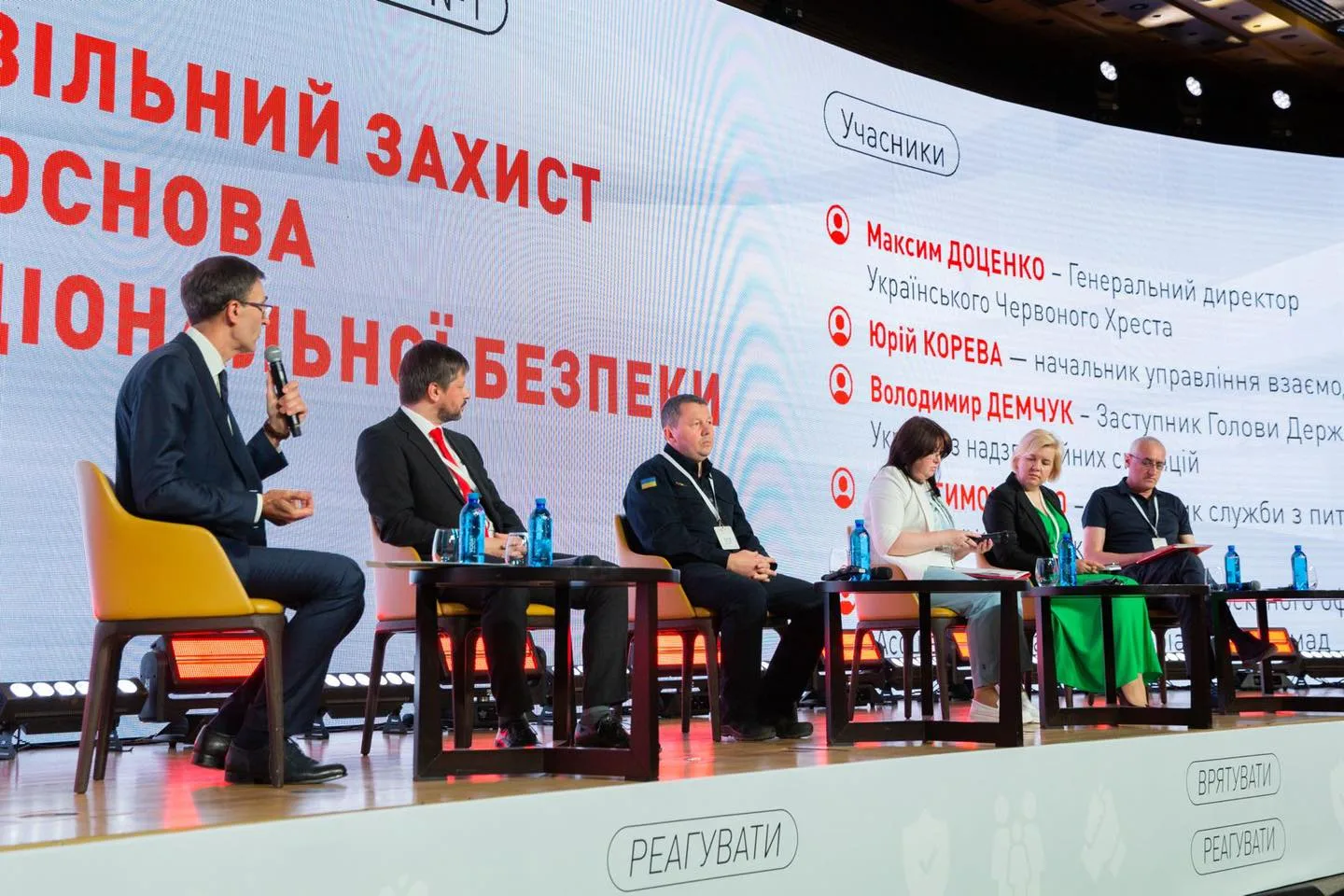A two-day forum on Humanitarian Architecture and Civil Protection Development in Ukraine took place in Kyiv. The event brought together government officials, volunteers, civil society activists and international partners. It was organised by the Ukrainian Red Cross in partnership with the State Emergency Service. The main topic of discussion was how to create an effective, sustainable civil protection system in Ukraine, where everyone – from volunteers to civil servants – plays an important role.
Read also: Air raid sirens, panic and insomnia: how to cope with stress when Russian missiles are flying overhead

How the Ukrainian Red Cross has grown
Maksym Dotsenko, Director General of the Ukrainian Red Cross, recalled how the organisation has gone from a classic aid provider to a strategic player in the civil protection sector in two years. “Over the past three years, the organisation has grown 12-13 times in terms of the number of projects, programmes and employees. Before the full-scale invasion, we had 400 employees, and now we have almost 5000. We have started doing things we hadn’t even thought about before: restoring infrastructure, building housing, and installing power grids. We are the only humanitarian organisation integrated into the Unified State System of Civil Protection. We are already working together with the SES in 14 regions and have ambitious expansion plans. We do not just help – we develop the capacity of communities,” said Maksym Dotsenko.

Local resilience
Volodymyr Demchuk, deputy head of the SES, added that there is no way to do without the public sector: “This is not about competition, but about complementarity. The European approach in action: the government and NGOs work side by side. And this is exactly what a modern system of responding to challenges should look like.”
The SES also stressed that it is important to strengthen local resilience. The emergency service proposes to create safety centres and voluntary rescue teams. They could include veterans, men over the age of 60, or even women – some communities in Donetsk Oblast have experience of forming women’s volunteer rescue teams. The involvement of local residents would reduce the response time to shelling or other emergencies from 40 minutes to 20 minutes. This is especially important for frontline communities. Training of civilians plays an important role in this.

The forum was another step towards a common vision: for the emergency response system to really work, it is necessary to coordinate the efforts of everyone – not only government agencies, but also NGOs and communities. Civil protection is not just about equipment or evacuation plans. It is about trust, cooperation and shared responsibility. The Ukrainian Red Cross and the SES are already working as a team. And it is in this format – together with communities and volunteers – that we can build a future in which everyone feels safe.
Read also: The invisible horror of Kherson. Killer drones against civilians



